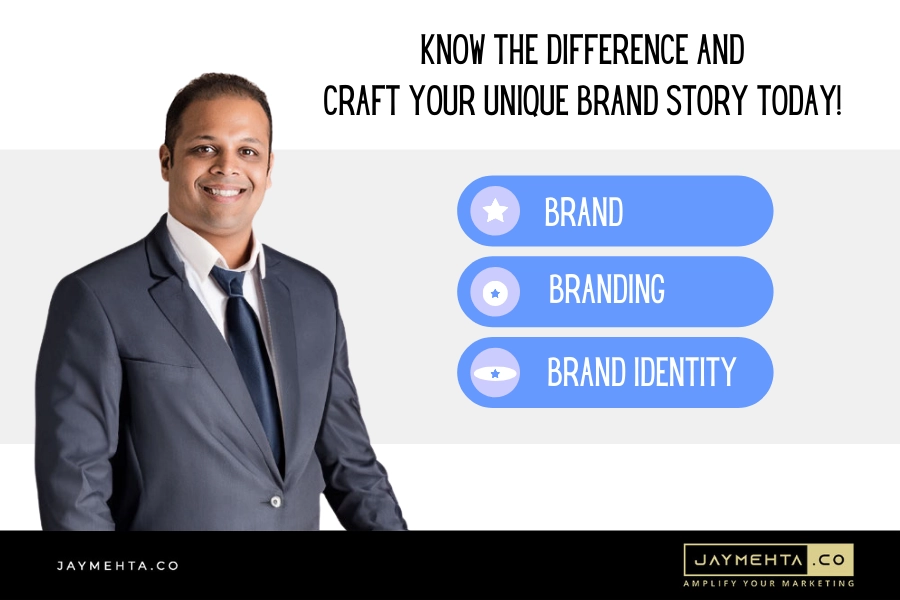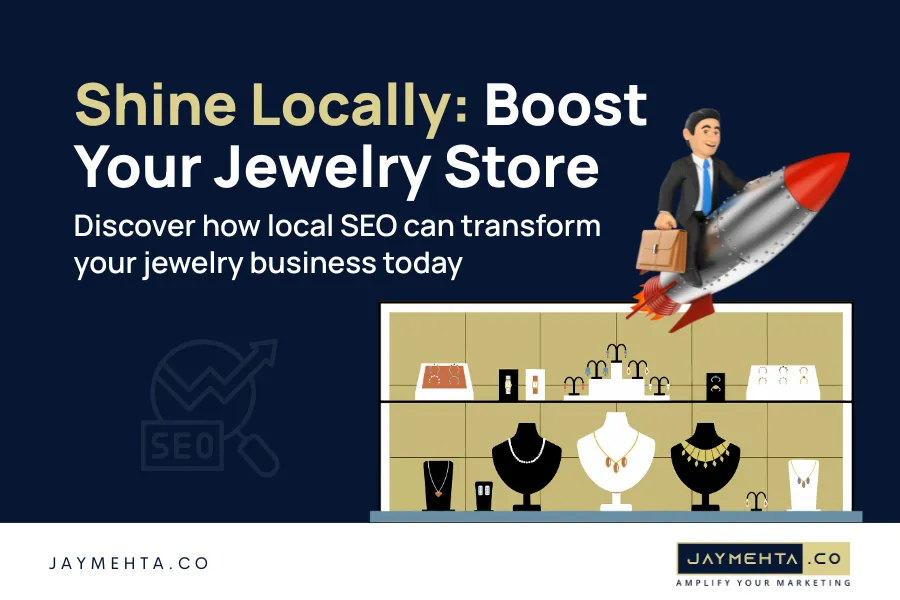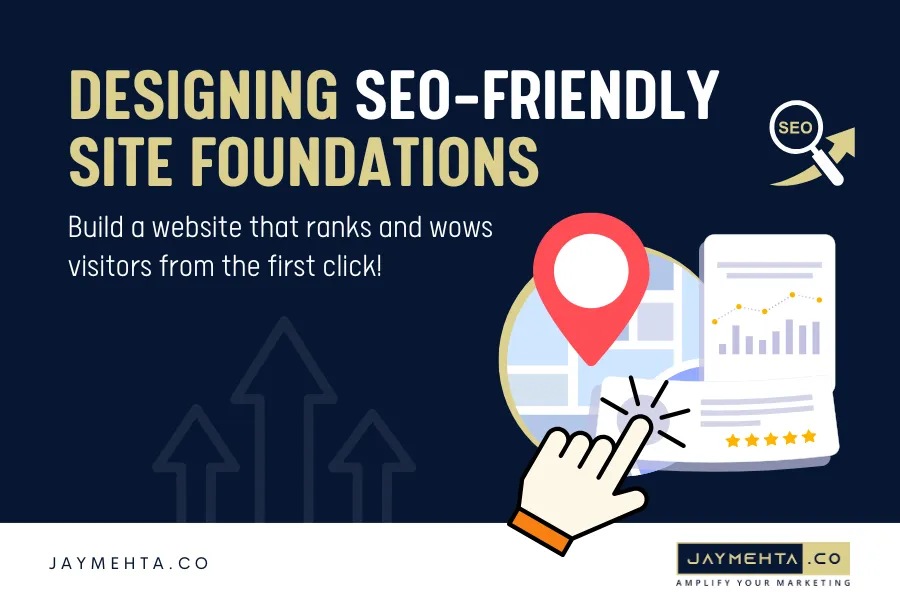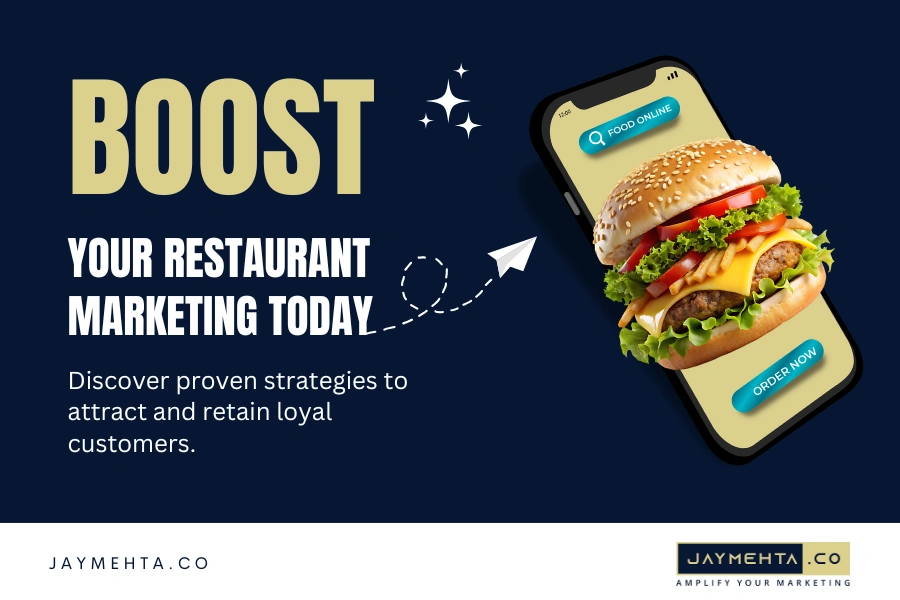When you observe a logo, can you discern which company it represents without any cues?
Depending on the logo, it can be straightforward to identify, but therein lies our point. Branding, Brand, & Brand Identity each contribute to logo recognition. These terms are often interchangeably used, with some mistakenly believing that one term encompasses all three.
However, they are mistaken.
Although these concepts work in tandem, they each serve distinct functions and objectives in determining a business's success or recognition. Given the confusion, it's crucial to delve deeper and clarify the disparities between Brand, Branding, & Brand Identity.
So, let's delve into it!
What Brand, Branding, & Brand Identity Are Not
When individuals begin contemplating branding for their business, a colleague or friend often prompts them to invest time and money into their brand identity to enhance their online presence and business growth.
A Google search for "brand" yields over nine billion results, leaving many with more questions than answers:
-
Does branding entail having a professional logo?
-
What does branding entail, and how do I execute it?
Don't the words "brand, branding, identity, even logo" essentially mean the same thing?
In essence, yes and no. Like many prominent companies, it boils down to how the business and brand are managed.
Consider major names like Apple, Microsoft, Facebook, and Coca-Cola; their logos immediately come to mind, eliciting an association with the brand regardless of the sentiment—good or bad—invoked.
Your Logo Is Not Your Brand, nor is it Your Identity
In fact, your logo constitutes less than 10% of your brand. This concept may be challenging, but all three components play crucial roles, collectively shaping consumers' perceptions of the business. Understanding the distinctions among these terms enables us to grasp the boundless potential each holds.
Related Blog: Building an Impactful Online Brand: Your Success Guide
What is Brand, Branding, and Brand Identity?
-
Brand - The meaning that people associate with your organization, product, or service.
-
Branding - The management of a brand’s meaning.
-
Brand Identity - The sensory elements used to identify a brand.
-
Logo - A mark or icon representing the business in its simplest form.
Let's explore further...
-
What Defines a Brand?
It seems everyone nowadays is eager to slap the label "brand" on anything, whether it's simply a company logo or identity. However, the term "brand" encompasses far more than just a logo. It represents the intangible assets of a company that aren't visible—the emotional bond between the company and its consumers.
A Brand is a Person’s Gut Feeling About a Business
For instance, consider Coca-Cola a brand cherished by millions globally for over 130 years. In 1985, when the company attempted to alter its formula, it sparked outrage and disappointment among its loyal customer base.
This incident underscored how deeply the emotional connection with customers impacts a brand and can even compel a company to reconsider its decisions for fear of alienating customers.
Every day, we encounter new products vying for our attention and money at the grocery store, presenting us with countless choices. In this competitive landscape, companies strive for visibility and a deep emotional connection with consumers, appealing to their senses beyond sight or sound.
So, what exactly constitutes a brand? A brand is the significance people attribute to your organization, product, or service. In contrast, branding involves the management of that significance.
-
What is Brand Identity?
Now, if your brand is what your customers perceive when you're not present, how can you influence their opinions and feelings toward you? This is where "brand identity" comes into play.
Brand Identity Is What You Can See
You Can Perceive It, Touch It, Hold It, Hear It, See It Move…Your brand identity encompasses anything that identifies your brand, including your logo. It's tangible and appeals to the senses, fostering recognition and accessibility. Put simply, everything you see (visual language) contributes to your brand identity, which extends to other sensory elements like sound, touch, and even smell.
The primary aim of a brand identity is to convey your story and engage people in a meaningful way, ensuring consistency in appearance each time your product is encountered.
Elements constituting Brand Identity include:
-
Wordmark or logo
-
Key Colors
-
Standard typographic treatments
-
Library of graphic elements
-
Different logo lockups
-
Corporate typefaces
-
A consistent style for images
-
Sound, touch, smell
Consistency is paramount for a successful brand identity, allowing your audience to form lasting impressions of your brand and what it offers. The core purpose of brand identity is to provide guidelines on using visual assets to maintain this consistency.
Consistency in brand identity helps project the culture surrounding your company and your product. This culture becomes synonymous with your entire business's brand identity when done effectively.
Therefore, regarding the logo as representative of your brand: your logo alone isn't your brand identity; rather, it's a component of your overall brand identity. This is where graphic designers come in—they don't design a brand for their clients but instead craft their clients' brand identity.
-
-
What is Branding?
So, if the brand represents the emotional aspect and brand identity embodies the physical aspect, what exactly constitutes branding?
Branding Is The Management of a Brand’s Meaning
Indeed, branding encompasses far more than merely a logo or a website. It constitutes an entire process of establishing a distinct name and image for a business, among numerous other benefits outlined above.
The branding process chiefly involves crafting advertising campaigns with a consistent theme. It also entails seizing every opportunity to convey to people why they should choose your brand over the competition, facilitated by maintaining a consistent brand identity and a robust brand strategy.
Branding encapsulates both tangible (brand identity) and intangible (brand) elements, representing the collective attributes a company brings to the market. It effectively communicates the character and values of the brand.
Read also: How to Create a Brand Strategy Plan
-
Types of Branding
While the process remains fundamentally similar, there exist various types of branding:
-
Cause Branding: Aligning your brand with a charitable cause or foundation.
-
Digital Branding: Utilizing social media, search engine optimization, and online platforms to drive commerce.
-
Co-branding: Collaborating with another brand with the aim of expanding reach.
-
Country Branding: Attracting businesses and tourists to a particular country.
-
Personal Branding: Establishing an individual's reputation.
It's worth noting that branding isn't a one-size-fits-all endeavor. While it involves planning to clarify what a company offers and describing the anticipated results, caution is warranted with the term "anticipated."
Your intent may be to portray yourself and your brand as friendly, trustworthy, and understanding. However, the way others perceive you may vary. Thus, it's imperative to ensure consistency in your brand strategy to guide your business in meeting customer needs.
-
-
What is the Business Branding Process?
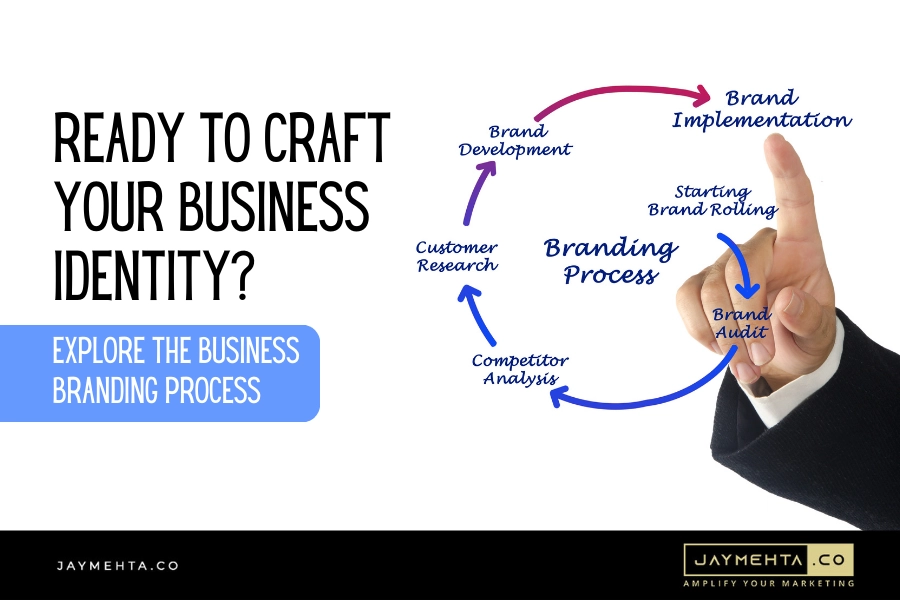
Up to this point, we have understood that a brand represents a relationship, while brand identity is a symbol of design. The brand is intangible, while brand identity is tangible. We understand that a brand does not design but builds it. Everything we have explored so far culminates in the branding process.
Indeed, your business's branding is a process—a disciplined approach to crafting a unique name and image for a product, company, or service in consumers’ minds.
Branding can be a genuine game-changer. This discipline has evolved significantly, from its origins as mere stamps of ownership on cattle to the creation of complex marketing and communications strategies for global organizations. The branding process primarily involves advertising campaigns with a consistent theme, complemented by the consistent use of brand identity (visual language) and the underlying brand strategy.
Branding is about seizing every opportunity to articulate why consumers should choose one brand over another. Businesses use branding to assert leadership, outpace competitors, and equip employees with the best customer access tools.
Thus, branding encompasses tangible and intangible aspects of a product's attributes: its name, packaging, price, history, reputation, and advertising.
In essence, the branding process communicates the characteristics, values, and attributes that define what a particular brand is and is not. It's up to you to effectively communicate these characteristics, ensuring alignment with your desired brand association. Whether it's your company, a product, or a personal brand, image and consistency (brand identity) play crucial roles in branding.
Branding represents the overarching plan, outlining a product's or individual's anticipated outcomes. However, it's important to note the term "anticipated." While you may intend for your audience to perceive your brand as trustworthy, progressive, and friendly, their actual perception may vary.
Here's a list of branding terms:
-
Brand Positioning
This term refers to how consumers perceive your brand in relation to its competitors. For example, Volvo positions itself as the safest car manufacturer, setting itself apart from other automotive brands.
-
Brand Promise
Your brand promise is your commitment to your customers. For instance, FedEx promises to deliver packages "Absolutely, Positively Overnight," ensuring reliability and timeliness in its service.
-
Brand Essence
Think of brand essence as the soul of your brand. Starbucks, for example, embodies the essence of "Rewarding Everyday Moments" by creating a cozy and welcoming environment for its customers.
-
Brand Associations
These are the mental connections that consumers make with your brand. Apple, for instance, is associated with innovation, sleek design, and premium quality products.
-
Brand Personality
Just like people, brands can have personalities too. With its cheerful, friendly, and optimistic image, Coca-Cola embodies a brand personality that resonates with consumers worldwide.
-
Brand Archetype
Archetypes are universal symbols or patterns that resonate with people deeply and subconsciously. Nike, for example, embodies the "Hero" archetype by empowering individuals to overcome challenges and achieve greatness.
-
Brand Voice
Your brand voice is the tone, style, and personality you use to communicate with your audience. Wendy's, known for its witty and sarcastic social media presence, maintains a distinct brand voice that distinguishes it from competitors.
-
Brand Values
The core principles and beliefs guide your brand's behavior and decision-making. Patagonia, for instance, prioritizes environmental sustainability and social responsibility, aligning its actions with its values to build a loyal customer base.
Strong brands don't materialize overnight. They typically result from a long-term strategy aligned with the company's understanding of customer needs. Consider what you have to offer, what sets you apart, and use brand identity (visuals) to align with your core values, mission, and vision at every touchpoint with your audience.
What Is A Logo?
To grasp the concept of a logo, we must first understand its purpose: "identification."
A logo serves to identify a company or product through the use of a mark, flag, symbol, or signature. It doesn't directly sell the company, nor does it typically describe the business. Rather, logos derive significance from what they symbolize, emphasizing that logos are meant to identify, not explain. Ultimately, the meaning behind a logo holds more significance than its visual appearance.

Jay Mehta Digital exemplifies the fusion of branding, brand essence, and visual identity. Introducing a new logo, a stylized rendition reminiscent of the Microsoft Logo, underscores a pivotal transformation phase. This strategic redesign extends beyond the logo to encompass the company's website and mobile app, reflecting a comprehensive revitalization effort.
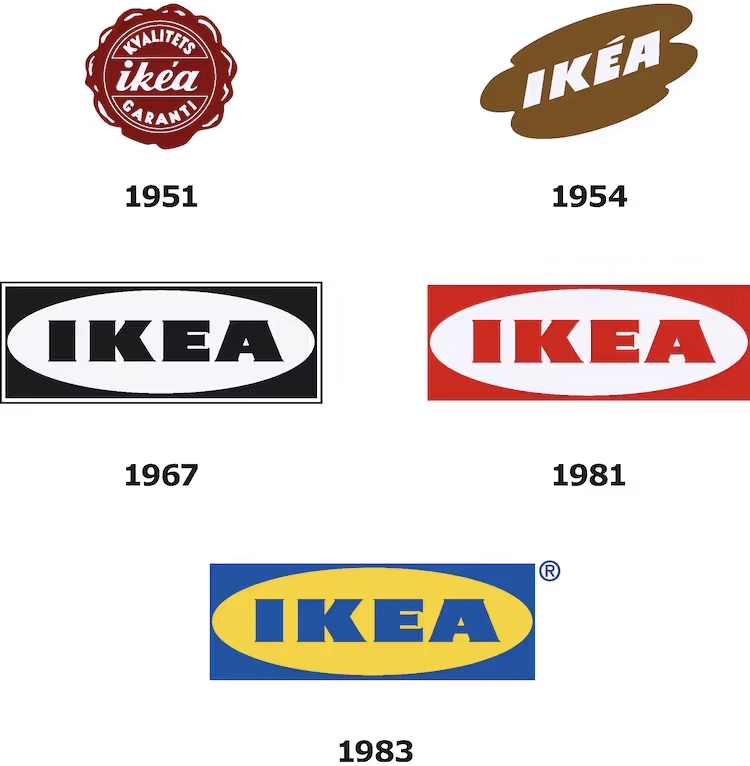
As shown in the image above, the IKEA logo has undergone substantial changes but has remained consistent since 1967, primarily altering its colors while retaining its shape and font.
The present use of blue and yellow symbolizes trust, reliability, friendliness, and affordability. Alongside the rounded, black font and oval frame, it conveys a strong, well-positioned, and inclusive brand impression.
What is the Distinction between Brand, Branding, Brand Identity & Logos?
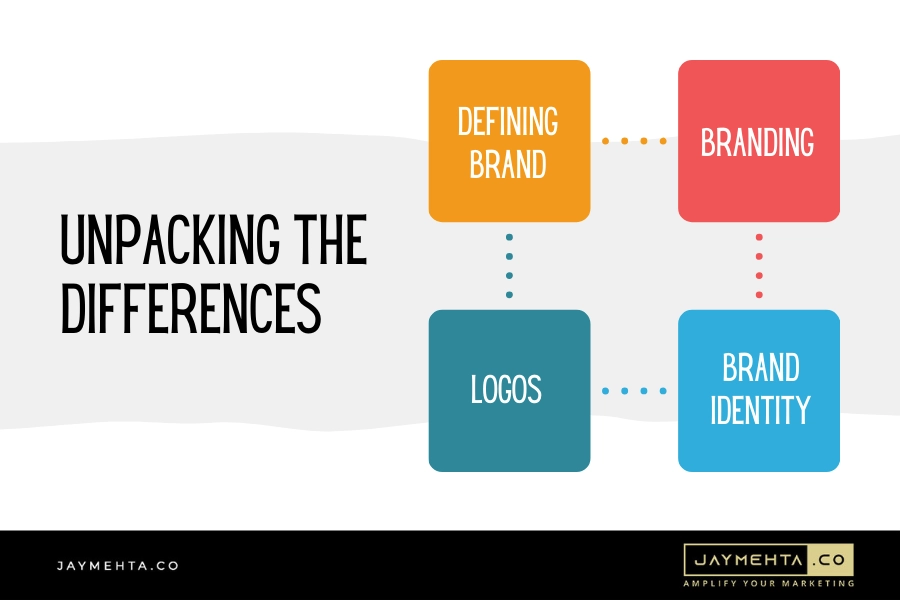
While a brand, branding, marketing, brand identity, and logos all work together to support your business, they are individual components of a greater whole. Each plays distinct roles and has specific objectives in shaping your brand’s image.
Understanding the definitions of brand, branding, marketing, logo, and brand identity will enable you to use these terms accurately and comprehend how each contributes to your business's overall framework.
As you can see, there's much to clarify!
-
Branding vs. Marketing
Branding and marketing, although often confused, are two separate facets of a business strategy. Branding focuses on the company or business itself—defining its identity, values, and desired perception. It serves as the foundation upon which all marketing initiatives are built.
Conversely, marketing revolves around the product—it involves promoting and selling products or services. While marketing tactics may evolve with market conditions, the brand remains consistent, guiding all marketing endeavors.
Understanding this differentiation is crucial for devising effective business strategies that resonate with your target audience and foster long-term success.
-
Brand vs. Branding
'Brand' and 'branding' are frequently interchangeable terms, yet they represent distinct but interconnected concepts. A 'brand' encompasses the overall image of the company—the associations, expectations, and emotions evoked in customers when encountering any aspect of the company. It embodies what people perceive when they hear your company's name.
In contrast, 'branding' is the active process of shaping this perception. It encompasses a series of actions and strategies to express a brand's identity, core values, and messaging. Branding is the means to achieve the desired brand image.
-
Brand vs. Brand Identity
Similarly, 'brand' and 'brand identity' are separate concepts within the broader realm of branding. A 'brand' represents customers' comprehensive impressions of a company—it reflects how people feel about your business based on their interactions and experiences.
On the other hand, 'brand identity' comprises the tangible elements a company employs to convey the desired image to its audience. It dictates how a business aims to be perceived and the narrative it wishes to convey. A robust brand identity can influence brand perception, aligning it with the company's values and aspirations.
The term "brand" is often used by marketing experts and others who claim to know what's best for your company. However, it's important to understand that your logo does not define your brand or identity.
Branding involves a comprehensive process encompassing your business's emotional and physical aspects. You can build a brand that will thrive only by truly understanding and mastering these elements.
Wrap Up
If you aim to leave a lasting impression on your customers, it's essential to understand the intricacies of brand, branding, and brand identity. These factors hold the power to shape how customers perceive your business and can significantly influence the association of positive experiences and emotions with your products or services.
Utilizing these elements is not static; it must also evolve with new digital marketing trends, such as the rise of social media. It's about projecting your desires and evoking the emotions people need to feel about your brand.
Developing a brand and its identity is akin to crafting a captivating narrative that resonates with your audience and integrates your company into the fabric of their lives. This powerful tool is what you need to establish recognition and leave a lasting impression.
If your business requires assistance enhancing its branding, brand, and visual identity, don't hesitate to reach out to Jay Mehta Digital. You'll find the solutions you've been seeking. Don't delay any longer; obtain more information today.
FAQs
What is the distinction between branding and identity?
Brand identity serves as the visual representation of a brand, while branding encompasses the underlying processes.
What are the primary attributes of branding?
The cornerstone of branding lies in its function as a promise. Your brand embodies the expectations of individuals when they engage with you: their overall experience and the value they receive. Think of it as the foundation of a house; without a sturdy foundation, cracks will emerge elsewhere.
What is the impact of branding?
The mere sight of a Nike swoosh or the familiar jingle of McDonald’s “I’m Lovin’ It” elicits an immediate emotional response from consumers. This illustrates the profound influence of branding and underscores its importance in marketing.
Why is having a strong brand essential?
Establishing a robust brand can sway customers to choose your product or service over competitors’ offerings due to the emotional connection they form with your brand.
How does a logo differ from branding?
A logo acts as the visual emblem of your company, while branding strategy encompasses how you present yourself to your target audience. Your logo and branding strategy should complement each other, forming a solid foundation that reflects your company’s identity and strengths.

